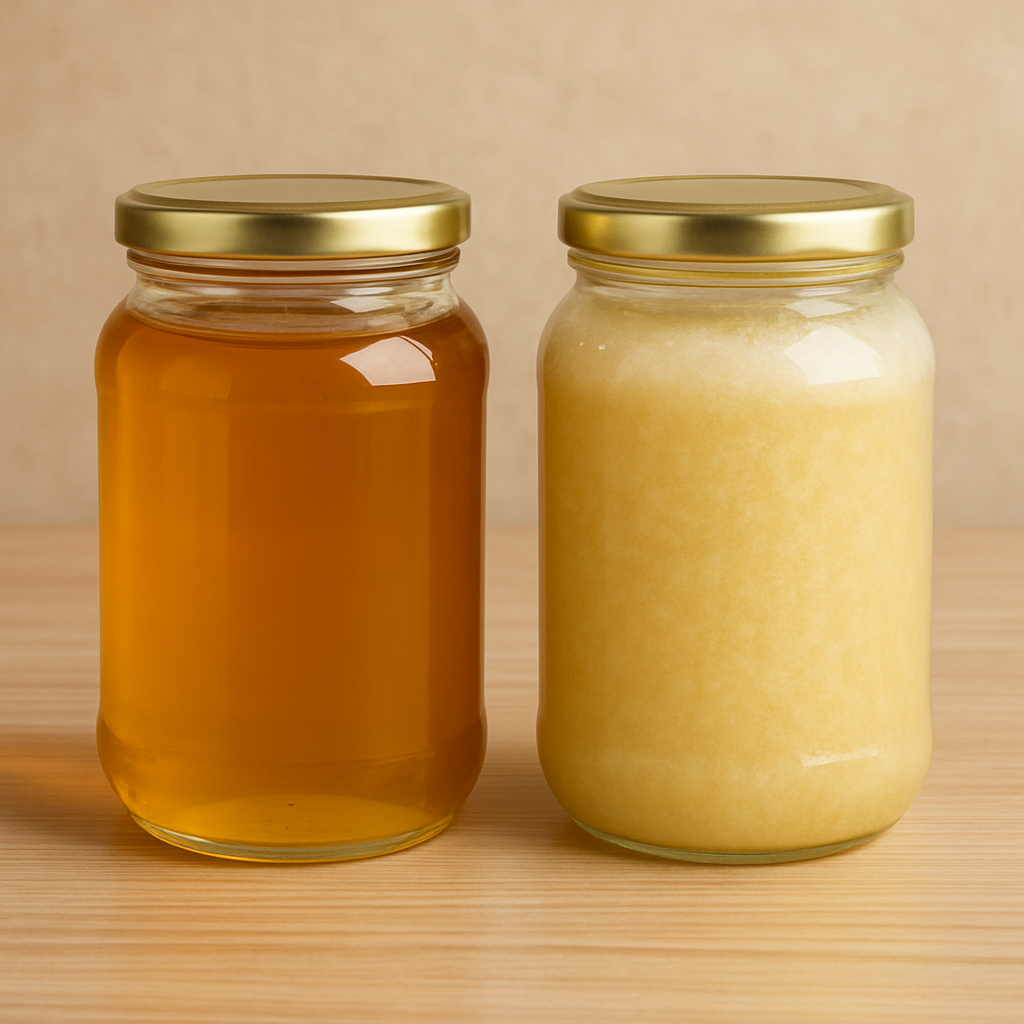
Crystallized Honey: What It Is and Why It’s Totally Delicious
Ever opened a jar of honey only to find it thick, grainy, or even solid? Don’t worry—your honey hasn’t spoiled. In fact, it’s just doing what real honey naturally does: crystallizing.
Crystallization is a normal process that proves your honey is raw, unprocessed, and full of the good stuff. Let’s take a closer look at why honey crystallizes and how to enjoy it in all its forms.
Why Does Honey Crystallize?
All honey contains two main natural sugars: glucose and fructose. Over time, the glucose separates from the water and forms crystals, especially in cooler temperatures. This turns your smooth honey into a thick, creamy, or crunchy texture.
Raw and minimally filtered honey crystallizes faster because it still contains pollen, beeswax, and other natural elements that act as tiny "seeds" for crystals to form.
Is Crystallized Honey Still Good?
Yes! It’s just as safe, tasty, and nutritious as liquid honey—sometimes even more so. The texture is perfect for spreading on toast, stirring into hot drinks, or adding to oatmeal or yogurt without the mess.
Many people even prefer it this way. It’s a little like nature’s version of a honey butter spread!
How to Turn Crystallized Honey Back into Liquid
If you like your honey smooth and pourable, you can easily return it to its liquid state—no fancy tools required.
Here’s how:
-
Place the jar in a bowl of warm water—not boiling.
-
Let it sit for 20–30 minutes, stirring now and then.
-
Repeat as needed until the crystals dissolve.
Important: Don’t microwave your honey. High heat can destroy its enzymes and health benefits.
The Bottom Line
Crystallized honey is a sign that your honey is real, raw, and unprocessed—exactly the kind of honey you want. Whether you enjoy it thick and textured or warm and smooth, it’s still 100% delicious and full of natural goodness.
